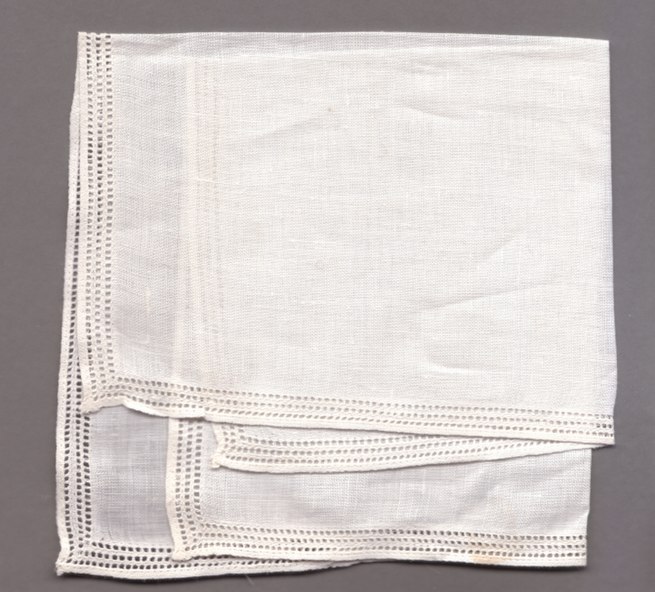
Main Difference
The main difference between Linen and Jute is that the Linen is a textile made from spun flax fiber and Jute is a bast fiber from the genus Corchorus
-
Linen
Linen is a textile made from the fibers of the flax plant. Linen is laborious to manufacture, but the fiber is very strong, absorbent and dries faster than cotton. Garments made of linen are valued for their exceptional coolness and freshness in hot and humid weather.
The word linen is of West Germanic origin and cognate to the Latin name for the flax plant, linum, and the earlier Greek λινόν (linón). This word history has given rise to a number of other terms in English, most notably line, from the use of a linen (flax) thread to determine a straight line. Many products are made of linen: aprons, bags, towels (swimming, bath, beach, body and wash towels), napkins, bed linens, tablecloths, runners, chair covers, and men’s and women’s wear.
The collective term “linens” is still often used generically to describe a class of woven or knitted bed, bath, table and kitchen textiles traditionally made of flax-based linen but today made from a variety of fibers. The term “linens” refers to lightweight undergarments such as shirts, chemises, waist-shirts, lingerie (a cognate with linen), and detachable shirt collars and cuffs, all of which were historically made almost exclusively out of linen. The inner layer of fine composite cloth garments (as for example dress jackets) was traditionally made of linen, hence the word lining.Textiles in a linen weave texture, even when made of cotton, hemp, or other non-flax fibers, are also loosely referred to as “linen”. Such fabrics frequently have their own specific names: for example fine cotton yarn in a linen-style weave may be called madapolam.
Linen textiles appear to be some of the oldest in the world: their history goes back many thousands of years. Fragments of straw, seeds, fibers, yarns, and various types of fabrics dating to about 8000 BC have been found in Swiss lake dwellings. Dyed flax fibers found in a prehistoric cave in Georgia suggest the use of woven linen fabrics from wild flax may date back even earlier to 36,000 BP.Linen was sometimes used as a form of currency in ancient Egypt. Egyptian mummies were wrapped in linen as a symbol of light and purity, and as a display of wealth. Some of these fabrics, woven from hand-spun yarns, were very fine for their day, but are coarse compared to modern linen. In 1923, the German city Bielefeld issued banknotes printed on linen.
Today, linen is usually an expensive textile produced in relatively small quantities. It has a long staple (individual fiber length) relative to cotton and other natural fibers.
-
Jute
Jute is a long, soft, shiny vegetable fiber that can be spun into coarse, strong threads. It is produced primarily from plants in the genus Corchorus, which was once classified with the family Tiliaceae, and more recently with Malvaceae. The primary source of the fiber is Corchorus olitorius, but it is considered inferior to Corchorus capsularis. “Jute” is the name of the plant or fiber used to make burlap, hessian or gunny cloth.
Jute is one of the most affordable natural fibers, and second only to cotton in the amount produced and variety of uses. Jute fibers are composed primarily of the plant materials cellulose and lignin. It falls into the bast fiber category (fiber collected from bast, the phloem of the plant, sometimes called the “skin”) along with kenaf, industrial hemp, flax (linen), ramie, etc. The industrial term for jute fiber is raw jute. The fibers are off-white to brown, and 1–4 metres (3–13 feet) long. Jute is also called the golden fiber for its color and high cash value.
-
Linen (noun)
Thread or cloth made from flax fiber.
-
Linen (noun)
Domestic textiles, such as tablecloths, bedding, towels, underclothes, etc., that are made of linen or linen-like fabrics of cotton or other fibers; linens.
“She put the freshly cleaned linens into the linen closet.”
-
Linen (noun)
A light beige colour, like that of linen cloth undyed.
“color panel|FAF0E6”
-
Linen (adjective)
Made from linen cloth or thread.
-
Linen (adjective)
Having the colour linen, light beige.
-
Jute (noun)
The coarse, strong fiber of the East Indian plant, ver=161115, used to make mats, paper, gunny cloth etc.
-
Jute (noun)
The plants from which this fibre is obtained.
-
Linen (noun)
cloth woven from flax
“a linen suit”
“he dealt in Irish linens”
-
Linen (noun)
articles such as sheets or clothes made, or originally made, of linen
“the linen cupboard”
-
Jute (noun)
a member of a Germanic people that (according to Bede) joined the Angles and Saxons in invading Britain in the 5th century, settling in a region including Kent and the Isle of Wight. They may have come from Jutland.
